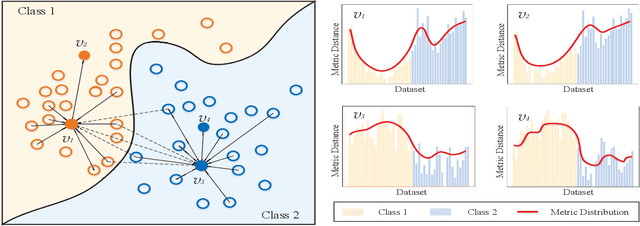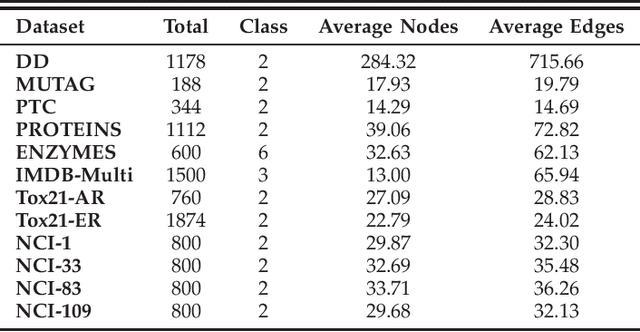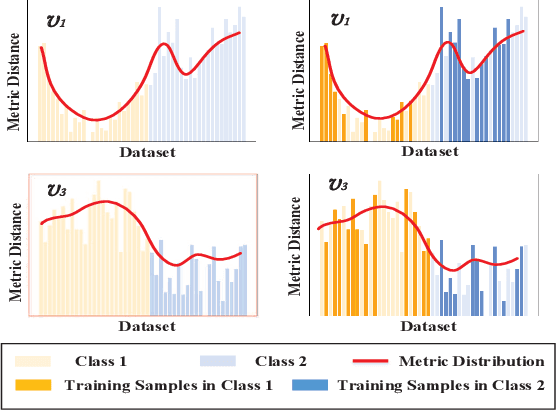Xiaobo Cao
Metric Distribution to Vector: Constructing Data Representation via Broad-Scale Discrepancies
Oct 02, 2022



Abstract:Graph embedding provides a feasible methodology to conduct pattern classification for graph-structured data by mapping each data into the vectorial space. Various pioneering works are essentially coding method that concentrates on a vectorial representation about the inner properties of a graph in terms of the topological constitution, node attributions, link relations, etc. However, the classification for each targeted data is a qualitative issue based on understanding the overall discrepancies within the dataset scale. From the statistical point of view, these discrepancies manifest a metric distribution over the dataset scale if the distance metric is adopted to measure the pairwise similarity or dissimilarity. Therefore, we present a novel embedding strategy named $\mathbf{MetricDistribution2vec}$ to extract such distribution characteristics into the vectorial representation for each data. We demonstrate the application and effectiveness of our representation method in the supervised prediction tasks on extensive real-world structural graph datasets. The results have gained some unexpected increases compared with a surge of baselines on all the datasets, even if we take the lightweight models as classifiers. Moreover, the proposed methods also conducted experiments in Few-Shot classification scenarios, and the results still show attractive discrimination in rare training samples based inference.
Graph Classification Based on Skeleton and Component Features
Feb 02, 2021



Abstract:Most existing popular methods for learning graph embedding only consider fixed-order global structural features and lack structures hierarchical representation. To address this weakness, we propose a novel graph embedding algorithm named GraphCSC that realizes classification based on skeleton information using fixed-order structures learned in anonymous random walks manner, and component information using different size subgraphs. Two graphs are similar if their skeletons and components are both similar, thus in our model, we integrate both of them together into embeddings as graph homogeneity characterization. We demonstrate our model on different datasets in comparison with a comprehensive list of up-to-date state-of-the-art baselines, and experiments show that our work is superior in real-world graph classification tasks.
 Add to Chrome
Add to Chrome Add to Firefox
Add to Firefox Add to Edge
Add to Edge